Introduction
The Note that isn't a Note, yet it may very well end up being the last Note - Samsung's Galaxy S22 Ultra has some big shoes to fill. Attempting to appeal to both productivity-focused stylus lovers and photography enthusiasts, the latest Ultra will either be the ultimate phone, period, or fall short for either group in some way. We're here to find out which one is it.
The S Pen fans will have little to complain about on the face of it. The S22 Ultra has the same stylus as the Note20 Ultra and, like a true Note, it has a silo for keeping the thing inside the phone - none of that carry-it-separately-until-you-inevitably-lose-it nonsense with the S21 Ultra. The significant improvements in latency also sound promising, not that the old one was bad.
The camera crowd shouldn't be disappointed either. You're getting the same quad setup as the S21 Ultra (in principle, at least) and includes a couple of telephotos reaching all the way to 10x zoom, as well as an autofocusing ultrawide (that Samsung insists on keeping exclusive to the Ultra). That's in addition to the big-sensor nona-binning 108MP main camera, of course.

The lengthy specsheet (summarized below) includes what appears to be the brightest display on a smartphone to date, latest chipsets from Qualcomm or Samsung (depending on locale, as usual), a 1TB storage option (next to a 128GB base tier not befitting the UItra's stature), and a bump in battery capacity and rated charging power (we'll see about that).
Samsung Galaxy S22 Ultra 5G specs at a glance:
- Body: 163.3x77.9x8.9mm, 228g; Glass front (Gorilla Glass Victus+), glass back (Gorilla Glass Victus+), aluminum frame; IP68 dust/water resistant (up to 1.5m for 30 mins), Armour aluminum frame with tougher drop and scratch resistance (advertised).
- Display: 6.80" Dynamic AMOLED 2X, 120Hz, HDR10+, 1750 nits (peak), 1440x3088px resolution, 19.3:9 aspect ratio, 500ppi; Always-on display.
- Chipset: Exynos 2200 (4 nm) - International, Qualcomm SM8450 Snapdragon 8 Gen 1 (4 nm) - USA/China/India.
- Memory: 128GB 8GB RAM, 256GB 12GB RAM, 512GB 12GB RAM, 1TB 12GB RAM; UFS 3.1 .
- OS/Software: Android 12, One UI 4.1.
- Rear camera: Wide (main): 108 MP, f/1.8, 23mm, 1/1.33", 0.8µm, PDAF, Laser AF, OIS; Ultra wide angle: 12 MP, f/2.2, 13mm, 120˚, 1/2.55", 1.4µm, dual pixel PDAF, Super Steady video; Telephoto: 10 MP, f/2.4, 70mm, 1/3.52", 1.12µm, dual pixel PDAF, OIS, 3x optical zoom; Telephoto: 10 MP, f/4.9, 230mm, 1/3.52", 1.12µm, dual pixel PDAF, OIS, 10x optical zoom.
- Front camera: 40 MP, f/2.2, 26mm (wide), 1/2.82", 0.7µm, PDAF.
- Video capture: Rear camera: 8K@24fps, 4K@30/60fps, 1080p@30/60/240fps, 720p@960fps, HDR10+, stereo sound rec., gyro-EIS; Front camera: 4K@30/60fps, 1080p@30fps.
- Battery: 5000mAh; Fast charging 45W, USB Power Delivery 3.0, Fast Qi/PMA wireless charging 15W, Reverse wireless charging 4.5W.
- Misc: Fingerprint reader (under display, ultrasonic); NFC; Samsung DeX, Samsung Wireless DeX (desktop experience support), Bixby natural language commands and dictation, Samsung Pay (Visa, MasterCard certified), Ultra Wideband (UWB) support; Stylus, 2.8ms latency (Bluetooth integration, accelerometer, gyro).
Samsung Galaxy S22 Ultra unboxing
The S22 Ultra ships in a black cardboard box that's now even smaller than before (the environment appreciates it) with a stylized number '22' on the lid and a sparkly 'S' in a color to match the actual paintjob of the phone inside.

High-end Galaxy unboxings have become simple tasks over the past couple of years since bundled chargers became a thing of the past - the flipside of the slimline box. Inside it, you'll find the bare minimum - a USB-C cable and a SIM eject tool, and the phone itself. But what a phone it is.
Design, build quality, handling
You're thinking it, and you may have read it on this very website several times already, in this article and also in previous ones, but we'll go ahead and say it once more - this looks and feels like a Note, even though Samsung chose to name it otherwise. Calling it the S22 Note wouldn't have hurt, would it?

Indeed, the S22 Ultra has a very similar shape to the last Galaxy with a Note in its name, the Note20 Ultra, itself an evolution of previous designs in that lineage. Perhaps most characteristic of the Notes, the sharp corners are now found on this S handset, where more fluid curves are usually the norm.
 Galaxy S22 Ultra non-Note (left) next to the last Note, the Note20 Ultra
Galaxy S22 Ultra non-Note (left) next to the last Note, the Note20 Ultra
That said, the vanilla S22 and the S22+ have taken their own different path towards sharper edges and flat surfaces, reaching an almost iPhone-like state this year. But that's them.

The Ultra maintains a distinct high-end Samsung look with unapologetically rounded side edges to that 6.8-inch OLED display - it's nothing like the S21 Ultra, which opted for more restrained curvatures. In a way, this here is the more logical approach, we believe, since the ultimate Galaxy should look like it. Not that last year's model didn't look premium; it just didn't flaunt it.

Protected by Gorilla Glass Victus+, the screen is slightly smaller than the one on the Note20 Ultra, but the difference is so minuscule as to be irrelevant. Comparing to the S21 Ultra, the S22 Ultra actually offers a smidge more viewable area despite the identical diagonal, thanks to the new phone's more squarish, Note-like aspect ratio.

The S22 Ultra weighs as much as the previous generation, give or take a gram, and the 228g number marks an increase over the Note20 Ultra by some 20g. A long-time user of the last Note at the office says the new Ultra is tangibly heavier, so we'll go with his assessment. However, that doesn't make it an outlier in the large-size flagship segment - the iPhone 13 Pro Max (240g) and the Mi 11 Ultra (234g) are even heavier still.

Despite the S22 Ultra's overall Note-ness, there is still a hint of continuity coming from the S21 Ultra, and we find it in the finish of the back panel. Now upgraded to Gorilla Glass Victus+ (from the Victus non-plus of yesteryear), the back maintains the same frosted matte surface, particularly appealing on this black version here.
 The back panel finish has been carrier over from the Galaxy S21 Ultra (left)
The back panel finish has been carrier over from the Galaxy S21 Ultra (left)
There's a total of seven color options, four of which are available from carriers and retail outlets while the other three are exclusive to Samsung's official online store, for countries where that's a thing. The mainstream variants include our Phantom Black, the Phantom White that some say is the best looking one (this reviewer), and Green and Burgundy (which is similar, yet different than the Note20 Ultra's hero Mystic Bronze).

The online exclusives go by Graphite, Red, and Sky Blue, all of which have their exposed Armor Aluminum in black, a rather appealing combination.

While we're loving the looks, we're less enthused about the panel's grippiness, of which it has very little. If you're the case type of person, that'll be a non-issue, but then you won't be getting that matte (black) goodness.

For all the traits inherited from this phone or another, the S22 Ultra has a camera setup that's styled like no other Samsung's. You get five separate raised rings - three large ones (primary, ultrawide, and long tele) and two smaller ones (short tele and the laser AF bits), and while the arrangement is all its own, the Ultra does resemble a major competitor in the design of its camera lenses. And, dare we say, it's even worse than those iPhones at harboring lint in between the rings. Urgh.
 (Shown here is a rather extreme case which we deliberately worked to produce for dramatic effect)
(Shown here is a rather extreme case which we deliberately worked to produce for dramatic effect)
The separated cameras also make designing a case for the S22 Ultra a tall order, and we're yet to see one that we love. You can say we're not fully on board with Samsung for the new camera cluster styling, and even if last year's Ultra wasn't universally liked in that area, we're now inclined to say it's less of an eyesore.
 S21 Ultra (left) looks better, doesn't it?
S21 Ultra (left) looks better, doesn't it?
Another change this year, one specific to this Phantom Black colorway we have for review, is the tint of the frame. Properly black on the S21 Ultra, the rails on the S22 Ultra have a splash of dark purple mixed in. While some may appreciate having some color to go with the black everything, we tend to prefer the no-nonsense approach of last year's model.

That frame is now made of what Samsung calls Armor Aluminum, an in-house developed aluminum alloy the company introduced with the latest generation of foldables. At that point, it was touted as the strongest aluminum used in smartphones, which it may very well still be, but it's no steel.

The overall control scheme is like on any other recent Samsung and includes a power button and a volume rocker on the right (both made from recycled recovered fishing nets, yay for the environment).

There's a fingerprint reader embedded underneath the screen, and, as is the norm with Galaxy flagships, it's of the ultrasonic variety. While initial efforts were somewhat hit or miss, things got notably better last year with the newer, larger sensors, and we're quite happy with the implementation on the S22 Ultra in terms of speed and reliability (and not blinding you at night).

The usual bits are in the usual spots too - card tray, mic and primary loudspeaker are flanking the USB-C port on the bottom, the secondary mic is up top, the earpiece is behind a front-firing slit where the top of the display glass meets the frame above the selfie camera.
Speaking of the card tray, we aren't one bit surprised that the S22 Ultra offers no option for storage expansion - that's become the norm. But it's here that we'll mention that the 128GB base storage on a phone of this caliber feels a bit cheap on Samsung's part - it should have been 256GB.


Card tray does not take microSDs • Mic up top
You'll note the gray seal that helps the card slot remain dust- and water-tight - the Galaxy S22 Ultra carries an IP68 rating, so it should survive under water down to 1.5m for 30 minutes. Apple, for one, goes above and beyond this minimum required by the standard and offers claimed protection down to 6m under water for its current generation phones.
Then again, the S22 Ultra does have an S Pen going 10.5cm deep into a silo inside the phone and is still rated for to be protected against submersion. That can't be an easy feat, even if it's not the first time they've done it.
S Pen
The S Pen - for the first time in a Galaxy S series smartphone. It's perhaps this one single sentence in the promo materials that is the reason why the phone isn't called a 'Note', a moniker it rightfully deserves (in case you've missed our bitterness on the matter).

The stylus is otherwise the exact same unit you'd find inside the Note20 and Note20 Ultra - the SKU is probably different because of the new color, but the dimensions are identical. We say new color, singular, because all the mainstream colors of S22 Ultra get the same black S Pen with only the clicky cap on top matching the respective colorway of the phone. The online exclusives do have S Pens housings to match the body color though, with black caps to go with their black frames.

The internals of the S Pen are very likely identical too, and it's still an 'active' stylus in that it can do gestures and button actions without being in immediate proximity to the phone. The one on the Note20 Ultra was powered by a lithium titanate battery, and so is this one (probably, Samsung doesn't specify it). It communicates with the phone over Bluetooth Low-Energy, the stylus can be used for more than just writing, which is not really news - the functionality debuted on the Note9. But now is the first time it's available on a Galaxy S smartphone, mhm.

We should probably point out that if you've missed the last Note generation, you might be surprised to find the S Pen on the 'wrong' side of the S22 Ultra - it's on the left when the handset is facing you. We weren't entirely sure what brought about that change with the Note20 generation, and speculation pointed to button placement clashing with S Pen placement, and buttons had to go on the right, so the S Pen had to go in the left. That's how things are on the S22 Ultra as well.
 Two Notes with the S Pen on the wrong side - S22 Ultra (left) and Note20 Ultra
Two Notes with the S Pen on the wrong side - S22 Ultra (left) and Note20 UltraOne spectacular example of OLED goodness
The Galaxy S22 Ultra is equipped with the pinnacle of Samsung smartphone display technology available to the public, short of the foldables (though one could argue this is simply a different branch). Eye-searing brightness, adaptive refresh rate, QHD resolution, S Pen compatibility, all that coupled with OLED's true black blacks, make for a package that's practically unrivaled - the Dynamic AMOLED 2X name doesn't quite convey that.

The 6.8-inch panel is curved towards the sides, as befits Samsung's true flagship, even if opposition is vocal in pointing out its usability shortcomings. The punch hole for the selfie camera, meanwhile, has turned from an eye-sore to a non-issue.
Samsung claims 1750nits of peak brightness (for small patches of lit-up area, which is not explicitly stated) and 1200nits in 'high brightness mode', another name for the ambient light sensor-controlled maximum in bright conditions.
Under bright light, with adaptive brightness enabled, we measured 1266nits on our S22 Ultra under the standard 75% APL that we test and compare between phones, which is more than 200nits brighter than the closest competitor, the iPhone 13 Pro Max. It's quite the generational improvement over the S21 Ultra or the Note20 Ultra, both putting out just over 1000nits under the same circumstances.
In less adverse conditions and with you in control of brightness, you'd be looking at 494nits with the slider all the way to the right. There's a bit more to that this time around, as there's a brand new 'Extra brightness' toggle in the display settings that appears if you disable the 'Adaptive' toggle. That unlocks an extra 300nits, give or take, manually attainable regardless of ambient light, bringing the number up to 829nits.
The Ultra does have a minor advantage over the S22+ in all of these tests, which, marginal as it may be, does leave a warm feeling in Ultra owners that they are getting the absolute best there is.
| Display test | 100% brightness | ||
| Black, |
White, |
||
| 0 | 494 | ∞ | |
| 0 | 829 | ∞ | |
| 0 | 1266 | ∞ | |
| 0 | 468 | ∞ | |
| 0 | 782 | ∞ | |
| 0 | 1214 | ∞ | |
| 0 | 458 | ∞ | |
| 0 | 1023 | ∞ | |
| 0 | 504 | ∞ | |
| 0 | 1024 | ∞ | |
| 0 | 852 | ∞ | |
| 0 | 1050 | ∞ | |
| 0 | 609 | ∞ | |
| 0 | 754 | ∞ | |
| 0 | 514 | ∞ | |
| 0 | 943 | ∞ | |
| 0 | 493 | ∞ | |
| 0 | 774 | ∞ | |
| 0 | 525 | ∞ | |
| 0.038 | 871 | 22921:1 | |
| 0 | 489 | ∞ | |
| 0 | 922 | ∞ | |
Samsung was keen to advertise its new Vision Booster feature, which helps makes the display handle bright ambient light better. The phone analyzes the images being displayed and, based on the amount of light hitting the display, it applies different tone mapping to boost shadows and color. We're perhaps a bit spoiled by already great displays, so the Vision Boosted Ultra didn't seem all that big of an improvement from the old one. Properly great in sunlight, of course, just not a night and day difference.

Nothing's changed with the way Galaxies handle color. There are two modes on the Ultra, Vivid and Natural, and they have very different color output and priorities. The default is Vivid, it does what it says and covers a wide color gamut, while being reasonably accurate when presented with our DCI-P3 color swatches (average dE2000 of 3.3). It's slightly cold and a nudge of the temperature slider to the mid-warm position makes things more neutral, while the warm setting takes them into yellowish territory. There are RGB sliders in addition to the five-position temperature slider, if you're into manual adjustment.
Natural mode is more dull to the eyes, but very accurate to the testing equipment when the phone is served with sRGB test swatches (average dE2000 of 1.4). No further tweaking is available in this mode.

On to the topic of refresh rate. We covered it at length in a separate article as we explored it during the review process, at least to the level of understanding we could gain with the tools at our disposal - head over there for the details.
To summarize it here, the S22 Ultra is, indeed, able to dynamically switch between refresh rates to deliver the appropriate mode for the content being shown. Across the board, you get 120Hz when touching the display, which drops to 24Hz when the phone is idling. Browsers get an intermediate 60Hz step for when there's dynamic content being shown while you're not touching the screen. Games that support a high frame rate get 120Hz. For video playback, the phone will match the refresh rate to the frame rate of clip - 24Hz for 24fps, 30Hz for 30fps, and so on, and that will be the case in HDR playback too (one of the few use cases where the S22+ behaved differently and maintained 120Hz).
The Android 12 support APIs on the Galaxy S22+ and S22 Ultra list that their panels can refresh in one of the following modes: 10Hz, 24Hz, 30Hz, 48Hz, 60Hz, 96Hz and 120Hz. That's neither here nor there, since Samsung claims that the Ultra can do 1-120Hz, while the other two should vary between 48 and 120Hz.

That led us to discovering the GPU Watch tool in developer options which revealed that the refresh rate of the display and the frame rate at which the GPU outputs new frames aren't necessarily the same thing and the phone varies both according to content and activity.
With that distinction pointed out, we never saw the Ultra display a refresh rate lower than 24Hz, but we did catch it drop to 1fps. That's the same observation we got when examining the S22+'s behavior. Mind you, the Hz and fps counters available to us may or may not tell the full story and there could be other layers of sophistication and adaptive logic that we can't see.
Samsung Galaxy S22 Ultra battery life
The Galaxy S22 Ultra is powered by a 5,000mAh battery, an increase over the 4,500mAh capacity the Note20 Ultra and same as the S21 Ultra's. So those leaning on the S-side of the S/Note balance should be happy that the capacity hasn't suffered from the inclusion of the S Pen, while Note fans will be pleased to get a bump.

The latest Ultra did pretty well in our testing. We got 18 full hours of video playback with the display locked at 60Hz (as is our standardized procedure) while switching it to Adaptive didn't prove beneficial even though it made the phone run at 24Hz for our test video.
In web browsing over Wi-Fi, the S22 Ultra was good for 17 hours in Adaptive mode where we got momentary spikes to 120Hz every 10s for new page loads while it maintained 24Hz in between those instances. Standard mode with its 60Hz refresh rate brought a two-hour increase to this time (18:55h).
Voice call longevity was very good and we clocked 32 hours of talk time, while standby performance is best described as average - high-end SoCs have hardly excelled at that lately.
Ultimately, the Galaxy S22 Ultra posted an Endurance rating of 108h.

Our battery tests were automated thanks to SmartViser, using its viSerDevice app. The endurance rating denotes how long the battery charge will last you if you use the device for an hour of telephony, web browsing, and video playback daily. More details can be found here.
Video test carried out in 60Hz refresh rate mode. Web browsing test done at the display's highest refresh rate whenever possible. Refer to the respective reviews for specifics. To adjust the endurance rating formula to match your own usage - check out our all-time battery test results chart.
All of the above tests were carried out at the full resolution display setting (1440x3088px). We have historically been unable to observe a meaningful advantage of switching to 1080p, but we nevertheless ran the two screen on tests at the lower resolution. We got an extra hour in web browsing (17:59h, Adaptive, 120-24Hz) and half an hour of video playback (18:32h, Standard, 60Hz). Make what you will out of these numbers, but if this is the magnitude of savings possible, we'd rather keep the screen at 1440p.
Charging speed
Industry leading fast charging has never been a thing that Samsung does. They dabbed into the field of high-power charging with the Note10+ and the S20 Ultra and their 45W support, which made next to no difference in actual charging speed compared to the regular 25W adapters. Subsequent models abandoned it, but here it is, making a return on the S22+ and S22 Ultra.

We were hoping for some sort of a magic change that would make a significant difference, but as it stands right now, that is not the case. With the existing 45W Samsung adapter (EP-TA845) we got essentially the same numbers for both the first 30 minutes and for a full charge as with the 'standard' 25W unit (in quotes because it's also a separate purchase).
There is a new 45W adapter in the works (EP-T4510), which isn't available for purchase yet. We have little doubt in our minds that it'll bring nothing other than a slightly more compact body (it's got the same specs for voltage and current modes as the existing model). We'd be happy to be proven wrong, though, and get actually quicker charging.
Having said that, 60-ish percent in half an hour and zero to full in about an hour isn't totally bad. Context makes it look even okay-er, particularly if you pick your context right - the S22 Ultra is way faster to charge than an iPhone 13 Pro Max or a Pixel 6 Pro. There's also a minor bump in speed compared to last year's model, and that's despite the increase in capacity.
Most other comparisons aren't as flattering, of course, with a lot of phones getting to 100% charge in roughly half the time it takes the Galaxy.
But in the end, it's not so much the actual charging speed that we have a problem with (though that too could use a bump, sure). It's more the bad taste in our mouths from the advertised 45W charging that doesn't really do anything, much like it didn't on the Note10+.
30min charging test (from 0%)
Higher is better
- Oppo Find X3 Pro
100% - OnePlus 9 Pro
99% - Xiaomi Mi 11 Ultra
89% - Galaxy S22 Ultra (65W PD, no PPS)
65% - Galaxy S22+ (45W)
64% - Galaxy S22+ (25W)
62% - Galaxy S22 Ultra (25W)
61% - Galaxy S22 Ultra (45W)
60% - Apple iPhone 13 Pro Max (65W PD)
55% - Galaxy S21 Ultra 5G
54% - Google Pixel 6 Pro
48% - Galaxy Note20 Ultra 5G
43% - Apple iPhone 13 Pro Max (20W Apple)
42% - Galaxy Z Fold3 5G
33%
Time to full charge (from 0%)
Lower is better
- Oppo Find X3 Pro
0:28h - OnePlus 9 Pro
0:32h - Xiaomi Mi 11 Ultra
0:37h - Galaxy S22 Ultra (45W)
0:59h - Galaxy S22+ (45W)
1:01h - Galaxy S22 Ultra (65W PD, no PPS)
1:02h - Galaxy S22+ (25W)
1:02h - Galaxy S22 Ultra (25W)
1:04h - Galaxy S21 Ultra 5G
1:11h - Galaxy Note20 Ultra 5G
1:23h - Apple iPhone 13 Pro Max (20W Apple)
1:46h - Galaxy Z Fold3 5G
1:46h - Google Pixel 6 Pro
1:52h - Apple iPhone 13 Pro Max (65W PD)
1:54h
The S22 Ultra supports wireless charging and according to the listing in the WPC's database, it's certified for the Basic Power Profile and up to 4.4 watts of power. The phone can actually take up to 15 watts if you use Samsung's own Super Fast Wireless Charger and Super Fast Wireless Charger Duo, and some third-party charging pads may deliver more than the 4.4 number. The wireless charging standards are a bit fluid like that.
Wireless PowerShare is also supported, letting you charge other Qi-compatible devices off of the S22 Ultra's back.
Speaker test
The Galaxy S22 Ultra has a stereo speaker setup with one unit on the bottom firing down and another above the display that's facing you and also serves earpiece duty. The top speaker gets the left channel in portrait orientation and when in landscape the phone switches them based on the accelerometer input so sound comes out from where it should. The two are also entirely separate - the bottom one isn't helping out the top one one bit. It's not that surprising though, given that the two sound very much alike.


Bottom speaker • Earpiece/Top speaker
We're not ecstatic about the S22 Ultra's speaker output. It's quieter than both the S21 Ultra and S22+, enough to drop into the lower 'Good' category (the others are 'Very Good'). The iPhone 13 Pro Max and the Xiaomi Mi 11 Ultra are notably louder and have a lot more presence in the low end. The Galaxy is merely okay.
Use the Playback controls to listen to the phone sample recordings (best use headphones). We measure the average loudness of the speakers in LUFS. A lower absolute value means a louder sound. A look at the frequency response chart will tell you how far off the ideal "0db" flat line is the reproduction of the bass, treble, and mid frequencies. You can add more phones to compare how they differ. The scores and ratings are not comparable with our older loudspeaker test. Learn more about how we test here.
OneUI 4.1 over Android 12, familiar S Pen functionality
The Galaxy S22 Ultra runs Android 12 with a thick layer of familiar and generally liked OneUI on top. Samsung's custom overlay is in its 4.1 version on the S22s, the number after the decimal being there more to make you feel superior to the S21s and their 4.0 software, rather than making significant changes. Naturally, this being a Note of sorts, it gets a healthy helping of S Pen related functionality. Let's start with that.

The S Pen is essentially the same unit as found on the Note20 Ultra and has those capabilities, plus a couple more. One of the new additions is called Quick Note and lets you add entire webpages as scrapbook items in Samsung Note. We ran into a few issues with cookie consent popups that would show up several times in the captured note, but if you're not in Europe, you should mostly be fine. Quick Note works with the Samsung Internet browser and not with third-party ones, however.
The other new addition is called Collaboration View and it lets you use Samsung Notes on the S22 Ultra together with a Galaxy tablet. This mode turns the phone into your tool palette and the tablet is freed from that duty and only serves as a canvas.
This new generation of S Pen-having Galaxy also brings support for handwriting recognition for an additional 12 languages, bringing the total to 88. We can imagine this is just a Samsung Notes capability that will eventually become available on the S21 Ultra and the Note20 Ultra, at least.



This list has grown to 88 languages • Handwriting regognition
Samsung Notes is where you get to benefit from the new S Pen's improved latency. Introduced on the Note20 Ultra, AI point prediction is a feature that analyzes your S Pen input and anticipates where your writing may lead you so it's ready to fire up those pixels in 9ms, a substantial improvement over the 42ms of older Notes. The Galaxy S21 Ultra got those same 9ms. The S22 Ultra, on the other hand, brings that figure to as low as 2.8ms. Now, we'll have to take Samsung's word on those numbers, but side-by-side comparisons do make the S22 Ultra feel that little bit faster.

The S Pen on the S22 Ultra is an active one and it has a battery inside as well as a gyro, an accelerometer and Bluetooth connectivity for communicating with the phone without immediate proximity. This enables Air actions - a set of gestures that can be set to execute actions in various apps including the Gallery and browsers (Samsung's own, but also Chrome), but perhaps most usefully - the Camera. Then again, we'd say button presses are a lot easier to master than the gestures, which we reckon take some dedicated effort to learn and put to use.
Staples of S Pen functionality are here to stay, of course. Screen-off memo lets you just pull out the stylus when the phone is in standby and go right ahead and write a note on the black screen.
When you pull out the S Pen with the phone unlocked, the Air command menu appears (that's the default setting, you can turn it off). There are pre-set shortcuts here, which you can customize, and those can be either S Pen features or shortcuts to apps.






Screen off memo • S Pen settings • More settings • Behavior upon removal • Air command • Air command settings
Advanced screenshot capture is one of the S Pen's main use cases. Smart select allows you to take differently shaped screenshots, extract text from them, or pin them on the screen. Alternatively, you can create short GIF animations. Then there's Screen write that takes a fullscreen snap that you can write on with the full set of different pens and brushes (and then crop, if you will). Screen Translate can translate single words into a pre-selected language if you just hover over them.





Screenshots and related functionality: Smart select • Smart select • Save link • Screen write • Translate
There are numerous other smaller use cases for the S Pen as part of the Air view set of actions. For, example, you can hover over an image in the gallery for an enlarged preview, or over a calendar entry for more details. You can also scroll up and down by hovering the S-Pen over the edge of the screen.
Insert the S Pen back into its slot and the S22 Ultra becomes a Galaxy like any other. The lock screen looks the same as before with two monochrome shortcuts - dialer and camera.
The under-display fingerprint reader will likely be the primary method of unlocking for most, but you can still use face unlock either instead of or alongside it. It can be more convenient in certain situations, but it generally is less secure since it's just using the selfie camera, meaning tricking it isn't too hard.
Always-on display is available - it's the simplified version from One UI 3. You can choose between a few clock styles or opt for an Image Clock. Music info is also supported. The feature can be always-off, always-on, scheduled, shown only when new notifications are available, or you can opt for tap to show for 10s.





Lockscreen • Lockscreen settings • Clock style • Always-on display options
OneUI 4.1 looks even cleaner than v.3.x, but the basics remain the same - there are homescreen, widgets, notification center, task switcher and an app drawer.






OneUI 4.1: Homescreen • Folder view • App drawer • Task Switcher • Notifications • Quick toggles
Samsung's Smart Widgets can combine a few different pieces of data and take up less space. They are also much more customizable. The Samsung keyboard is now even more feature-rich and customizable than ever with the inclusion of more emoji and stickers.




Smart Widgets • Smart Widgets • New emoji • Stickers too
One of the new One UI 4 features is Color Palettes, an implementation of the vanilla Android 12's Wallpaper colors. There are usually four Color Palette suggestions in addition to the default One UI Blue/Black one. Those are picked automatically by the software, depending on your current wallpaper. The color you choose will become the main one in the newly created theme (think Windows' "accent color").
These accent colors are applied on the dialer, the quick toggles, and other tiny UI bits. You can choose to apply them to the app icons as well.
The Settings menu contains a new Privacy Dashboard. Here you can easily see which apps are using some of the most important (for privacy) permissions. You can control the camera and control access across apps, opt for clipboard access alerts (useful if you copy passwords, social security numbers, IBANs, among others), and there is, of course, a full-blown permission manager of you like to dig deeper.
You get a whole bunch of options for using your Galaxy with other devices to enable various use cases. DeX is the proprietary feature that lets you use the phone as the 'computer' and add a monitor and a keyboard for a productivity boost - it works wirelessly or over HDMI.
Alternatively, the Link to Windows feature provides you with an interface to your phone from your computer so you can exchange images, manage notifications on your PC or even make calls from it.
Another option along those lines but with more limited potential is Continue apps on other devices. This requires you to be logged in to your Samsung account on both devices, hook them up to the same Wi-Fi network with Bluetooth enabled and use Samsung Internet browser or Samsung Notes. You'll then be able to copy and paste text and images across and open the same tabs in the browser.




DeX • Continue apps on other devices • Link to Windows
Other long-time proprietary Samsung features include the Edge panels - the panes that show up when you swipe in from the side and provide tools and shortcuts to apps and contacts. Game launcher, the hub for all your games, which also provides options for limiting distraction when gaming is here to stay as well. There's an in-house browser (Samsung Internet), which is instrumental to a lot of the advanced S Pen capabilities, as well as a reasonably powerful File manager. The Samsung Gallery also somehow still persists.





Edge panel • Game Launcher • Internet • File manager • Gallery
Performance and benchmarks
The Galaxy S22 generation maintains the same duality in chipset configuration that has been the source of academic arguments for years on end - handsets in some regions get a Snapdragon SoC, others are equipped with an in-house Exynos. This year, however, there appear to be changes in who gets what, with the most notable shift being the move from Exynos to Snapdragon for the Indian market. Our review unit has the Samsung chip inside, as is normally the case.

Both the Snapdragon 8 Gen 1 and the Exynos 2200 are manufactured on a 4nm production process and feature octa-core CPUs with the same base 1+3+4 core configuration. In either case you'd be getting one Cortex-X2 prime core, three Cortex-A710 cores and four Cortex-A510 with minor differences in the clock rate caps.
More principal differences can be found in the graphics department, where the Exynos variant's Xclipse 920 GPU is based on AMD's RDNA 2 architecture. Xclipse (very original use of the X) features ray tracing for life-like rendition of light as well as variable rate shading (VRS) for optimal resource allocation across the image (prioritizing performance in parts of the image that are important over ones that you may not even see). The Adreno 720 in the Snapdragon variant supports VRS too, but lacks ray tracing capability.
Both chipsets feature advanced connectivity options, including built-in 5G modems, Wi-Fi 6e, and dual-band GPS. Latest-gen AI engines on either chip promise AI improvements that are hard to quantify, but Qualcomm says this one is 4x faster than their previous one, while Samsung only claims 2x.
Easier to comprehend are the memory options and those start from a base (and way too basic, we might add) 8GB of RAM and 128GB of storage and go up to 12GB of RAM and 1TB of storage, with some sources pointing to a 16GB RAM version as well. Our review unit is a more reasonable 12GB/256GB spec.

We have yet to test Snapdragon 8 Gen 1 devices, so we'll be comparing the S22 Ultra and its Exynos 2200 to last-gen silicon for the time being. When it comes to CPU performance as measured in GeekBench, the 2200 isn't a massive leap forward, but it does manage to add a few points on top of the S21 Ultra's results in both single-core and multi-core testing. The S22+ isn't quite at the Ultra level either. Naturally, the two-year-old SoC in the Note20 Ultra is lagging behind. The SD888-equipped Zenfone 8 Flip is just barely ahead under multi-threaded load, a moderately surprising and not all that favorable outcome for the Galaxy.
GeekBench 5 (multi-core)
Higher is better
- Asus Zenfone 8 Flip
3673 - Galaxy S22 Ultra (1440p)
3657 - OnePlus 9 Pro
3636 - Galaxy S22+
3528 - Asus ROG Phone 5s Pro
3521 - Galaxy S21 Ultra 5G
3518 - vivo X70 Pro+
3469 - Galaxy Note20 Ultra 5G (Snapdragon)
3294 - Galaxy S21 Ultra 5G (Snapdragon)
3244 - Galaxy Z Fold3 5G
3239 - Xiaomi Mi 11 Ultra
3191 - Huawei P50 Pro
3145 - Galaxy Note20 Ultra 5G
2603
GeekBench 5 (single-core)
Higher is better
- Galaxy S22 Ultra (1440p)
1180 - Galaxy S22+
1165 - Asus Zenfone 8 Flip
1126 - OnePlus 9 Pro
1126 - Xiaomi Mi 11 Ultra
1126 - Asus ROG Phone 5s Pro
1117 - Galaxy S21 Ultra 5G (Snapdragon)
1109 - Galaxy S21 Ultra 5G
1107 - vivo X70 Pro+
1106 - Huawei P50 Pro
1105 - Galaxy Z Fold3 5G
1095 - Galaxy Note20 Ultra 5G (Snapdragon)
988 - Galaxy Note20 Ultra 5G
880
The Ultra does take a more noticeable lead over last year's models in Antutu, where the improvements in GPU performance start to be felt. Again, the Plus is a notch below the Ultra.
AnTuTu 9
Higher is better
- Galaxy S22 Ultra (1440p)
968359 - Galaxy S22 Ultra (1080p)
940400 - Galaxy S22+
886916 - vivo X70 Pro+
837833 - Asus Zenfone 8 Flip
797484 - Xiaomi Mi 11 Ultra
794016 - Huawei P50 Pro
786215 - Galaxy Z Fold3 5G
752218 - Asus ROG Phone 5s Pro
735588
GFX Aztek ES 3.1 High (offscreen 1440p)
Higher is better
- Galaxy S22 Ultra (1080p)
32 - Galaxy S22 Ultra (1440p)
31 - Galaxy S22+
31 - Asus Zenfone 8 Flip
28 - OnePlus 9 Pro
28 - Asus ROG Phone 5s Pro
28 - Xiaomi Mi 11 Ultra
27 - vivo X70 Pro+
27 - Galaxy S21 Ultra 5G
26 - Galaxy S21 Ultra 5G (Snapdragon)
25 - Galaxy Note20 Ultra 5G (Snapdragon)
22 - Huawei P50 Pro
22 - Galaxy Z Fold3 5G
20
GFX Aztek Vulkan High (offscreen 1440p)
Higher is better
- Galaxy S22 Ultra (1440p)
35 - Galaxy S22 Ultra (1080p)
34 - Galaxy S22+
34 - Asus Zenfone 8 Flip
31 - OnePlus 9 Pro
31 - Asus ROG Phone 5s Pro
31 - Huawei P50 Pro
30 - Xiaomi Mi 11 Ultra
29 - vivo X70 Pro+
29 - Galaxy S21 Ultra 5G
28 - Galaxy S21 Ultra 5G (Snapdragon)
25 - Galaxy Note20 Ultra 5G (Snapdragon)
23 - Galaxy Z Fold3 5G
19
GFX Car Chase ES 3.1 (offscreen 1080p)
Higher is better
- Galaxy S22 Ultra (1440p)
76 - Galaxy S22 Ultra (1080p)
76 - Galaxy S22+
76 - OnePlus 9 Pro
70 - Asus ROG Phone 5s Pro
70 - Asus Zenfone 8 Flip
69 - Xiaomi Mi 11 Ultra
69 - Galaxy S21 Ultra 5G (Snapdragon)
66 - vivo X70 Pro+
66 - Galaxy S21 Ultra 5G
64 - Huawei P50 Pro
64 - Galaxy Note20 Ultra 5G (Snapdragon)
57 - Galaxy Z Fold3 5G
55 - Galaxy Note20 Ultra 5G
50
In the onscreen tests the S22 Ultra puts up class-leading performance with its display set to 1080p, while the 1440p setting inevitably causes a significant drop in fps numbers, though there's still a measurable advantage over last year's model.
GFX Aztek ES 3.1 High (onscreen)
Higher is better
- Galaxy S22 Ultra (1080p)
51 - Galaxy S22+
50 - Asus Zenfone 8 Flip
41 - Asus ROG Phone 5s Pro
40 - Galaxy Note20 Ultra 5G (Snapdragon)
34 - Galaxy Note20 Ultra 5G
31 - Galaxy S22 Ultra (1440p)
30 - Huawei P50 Pro
27 - Galaxy Z Fold3 5G
25 - vivo X70 Pro+
25 - OnePlus 9 Pro
24 - Galaxy S21 Ultra 5G
24 - Galaxy S21 Ultra 5G (Snapdragon)
23 - Xiaomi Mi 11 Ultra
23
GFX Aztek Vulkan High (onscreen)
Higher is better
- Galaxy S22+
51 - Galaxy S22 Ultra (1080p)
46 - Asus Zenfone 8 Flip
45 - Asus ROG Phone 5s Pro
42 - Galaxy Note20 Ultra 5G (Snapdragon)
34 - Galaxy S22 Ultra (1440p)
29 - OnePlus 9 Pro
27 - vivo X70 Pro+
26 - Huawei P50 Pro
26 - Galaxy S21 Ultra 5G (Snapdragon)
25 - Xiaomi Mi 11 Ultra
25 - Galaxy S21 Ultra 5G
23 - Galaxy Note20 Ultra 5G
20 - Galaxy Z Fold3 5G
18
GFX Car Chase ES 3.1 (onscreen)
Higher is better
- Galaxy S22 Ultra (1080p)
69 - Galaxy S22+
68 - Asus Zenfone 8 Flip
62 - Asus ROG Phone 5s Pro
59 - Galaxy Note20 Ultra 5G (Snapdragon)
51 - Huawei P50 Pro
44 - Galaxy Note20 Ultra 5G
42 - Galaxy Z Fold3 5G
38 - Galaxy S22 Ultra (1440p)
37 - OnePlus 9 Pro
36 - Xiaomi Mi 11 Ultra
34 - Galaxy S21 Ultra 5G
33 - Galaxy S21 Ultra 5G (Snapdragon)
33 - vivo X70 Pro+
33
In 3DMark's Wild Life test the S22 Ultra and S22+ show a substantial 30% increase in scores, compared to the 2021 flagship crop.
3DMark Wild Life Vulkan 1.1 (offscreen 1440p)
Higher is better
- Galaxy S22 Ultra (1440p)
7437 - Galaxy S22+
7405 - OnePlus 9 Pro
5701 - Galaxy S21 Ultra 5G
5691 - Asus Zenfone 8 Flip
5677 - Xiaomi Mi 11 Ultra
5676 - Huawei P50 Pro
5651 - Galaxy Z Fold3 5G
5635 - Asus ROG Phone 5s Pro
5556 - Galaxy S21 Ultra 5G (Snapdragon)
5547 - vivo X70 Pro+
5332 - Galaxy Note20 Ultra 5G (Snapdragon)
4194
The S22 Ultra has a lot of thought put into cooling its internals. Gel TIM (almost like gelatin) is the name they came up with for the thermal interface material applied on top of the SoC, which provides up to 3.5x improved heat transfer compared to what's used on the S21 Ultra. The Nano TIM on top of it helps move heat faster into the stainless steel vapor chamber, which then dissipates it over a wide-area graphite sheet.
This does a good enough job, apparently, at least given the circumstances, since the phone doesn't heat up beyond what we'd consider reasonable, and its body warms up evenly, with no hot spots - to the touch at least.
Having said that, thermal throttling is still a thing on our S22 Ultra. Maximum CPU load over prolonged periods of time leads to a gradual decline in performance and 30mins of non-stop torture will have you looking at around 70% of its maximum results. Still, it's a very reasonable behavior without sharp drops and spikes, so you can count on stable performance. Admittedly, there was a bit of a steeper drop at 40-something minutes in, but the phone did return to the 70-ish percent level a few minutes later.
GPU performance drops more rapidly. In 3DMark, the third run of Wild Life is already at 80% of peak performance (that's three minutes into the 20-minute stress test), and numbers quickly arrive at what appears to be the sustainable 60% mark.


CPU Throttling Test • 3DMark Wild Life stress test
Overall, the Galaxy S22 Ultra leaves nothing to be desired in terms of performance, as expected from a top-class device. Every flagship smartphone throttles under long-term load and the behavior of the Ultra in such circumstances is well controlled. Not to mention that extreme loading such as in these benchmarks is rarely a thing in the real world.
Familiar quad cam with two teles and an UW that can AF
The Galaxy S22 Ultra is equipped with a quad camera system that is for the most part identical to the one found on last year's model. The highlights include a nona-binning 108MP main unit, one of only two aufocusing ultrawides in Samsung's lineup, and not one but two telephotos reaching up to 10x optical zoom.
 The camera system of the S22 Ultra (bottom) is very similar to the one of the S21 Ultra
The camera system of the S22 Ultra (bottom) is very similar to the one of the S21 Ultra
We'll start with the teles because while they may look the same as on the S21 Ultra at a passing glance, they are, in fact, different. The nominal resolution of both is the same at 10MP, and both have kept the zoom magnification and aperture of the lenses - the 3x zoom unit has an f/2.4 aperture, the periscope 10x stands at f/4.9. Both are still stabilized too.
So where's the difference, you ask? In the sensors. The S22 Ultra swaps the S21 Ultra's 1/3.24" type units for smaller 1/3.52" ones and pixel size is now 1.12µm as opposed to the 1.22µm on the previous model.
 Seemingly identical, yet different - the telephoto cameras of the S22U (left) and the S21U
Seemingly identical, yet different - the telephoto cameras of the S22U (left) and the S21U
The ultrawide camera on the S22 Ultra is carried over and it uses a 1/2.55" sensor with 1.4µm pixels and dual pixel autofocus. The lens has an aperture of f/2.2 and covers a field of view of 120 degrees.
It's this S22 Ultra and the S21 Ultra that maintain exclusivity on what should by now be a widespread feature - autofocus. Perhaps it's counterintuitive we're ranting about it in the review of the phone that does have it, but this particular reviewer is especially bitter because his S22's ultrawide is fixed-focus.
The primary camera uses the same ISOCELL HM3 sensor as last year's model, a 1/1.33" type imager with 0.8µm pixel size. With its Nonapixel color filter array and 9-to-1 pixel binning you could think of it as a 12MP unit with 2.4µm pixels, though that's a very simplified take. The lens has an equivalent focal length of 23mm - it's one mil wider than the S21 Ultra and you can easily spot the difference in coverage in side-by-side comparisons. The aperture is again f/1.8 and the lens is optically stabilized.

The selfie camera, meanwhile, appears to be entirely the same. You get a 40MP 1/2.8" Tetrapixel sensor with 0.7µm pixels behind a 26mm f/2.2 lens. Tetrapixel means 4-to-1 binning in Samsung speak, so you should expect 10MP images, but also bear in mind that the phone shoots in crop mode by default for 6.5MP images with a 32mm equivalent focal length.
App and features
The camera app on the S22 Ultra is the same as on every other recent Samsung with whatever minor visual tweaks OneUI 4 might have introduced. For example, gone are the tree indicators for zoom level, now replaced with more specific numerical stops, and selected mode from the carousel is highlighted with a gray background as opposed to the outline found on the previous OneUI.
Little else has changed in looks or operation. You still switch modes with horizontal swipes while vertical swipes toggle between front and rear camera. Double press on the power button works for launching the camera from any state (stand by, in-app) and once in the camera another double press will switch between front and rear too.

The viewfinder has buttons for access to the settings menu, flash modes, self timer, aspect ratio (where the full-res 108MP mode is found), Motion photo, and filters. The modes on the near end can be rearranged, and you can add others from the More pane, and remove ones you don't need immediate access to.
The video viewfinder swaps some of the icons, giving direct access to resolution and frame rate modes, as well as a toggle for the Super steady stabilization mode.
Samsung coined the word Nightography this year, which they use as an umbrella term to promote their advancements in low-light photography and videography. Night Solution, for example, is the AI magic that takes multiple exposures of a dark scene, discards the blurry or too noisy ones, and merges the good ones into a single good-looking photo. It works under-the-hood in Photo mode, Night mode, and Portrait mode (where it kicks in automatically when light levels drop below 13 lux). We do believe this type of processing has existed for a while now, without being called a Solution.
Video Nightography, meanwhile, is a combination of stabilization and automatic frame rate selection. The S22 Ultra's main camera has OIS that can correct for angles 58% wider than the S21 Ultra (another clue that the lens is different this time around), while the electronic stabilization now features 4 times higher motion sampling frequency which should help get it more data to feed the algorithms.


Camera UI for video • Auto FPS option
The Auto FPS feature should be able to adjust frame rate from 60fps (which you should know better than to use in the dark in the first place), all the way down to 15fps thus letting the phone capture more light for each of those frames. Since 15fps is too few frames for smooth video, the phone will synthesize intermediate frames to fill in the gaps and bring things to a watchable 24fps.
Another photography-related aspect of the S22 Ultra is the Expert RAW app. Launched in beta on the Galaxy S21 Ultra, and now available on the S22s in finished form (other models to get it in the coming weeks), Expert RAW is a better Pro mode of sorts. It offers the combined benefits of multi-frame HDR and the malleability of the DNG format, letting you tweak your photos around after the fact in post-processing.

The interface is very similar to that of the Pro mode in the main app, only here you do get an optional histogram - missing for years in the main app.
Daylight image quality
The Galaxy S22 Ultra takes good pictures in daylight with its main camera, though we wouldn't say they have much of a wow factor to them. Dynamic range is okay, but not really what you'd call flagship-grade wide and there is more of a sharp transition into clipped highlights and black shadows than a gradual rolloff. Exposure is accurate and reliable, no issues there, and color rendition is pleasingly lively without giving grounds for complaint about oversaturation.
On a pixel level we're seeing plenty of detail but also uncharacteristically high noise levels even at base ISO and in well-lit scenes. The way random detail is rendered, on the other hand, is rather typically overprocessed-looking.
We're willing to give Samsung the benefit of the doubt and speculate that it's the early firmware that is to blame for some of the imperfections in these images. That would make sense, particularly since the output of the S21 Ultra, a phone in its maturity, is less noisy and with better developed tonal extremes - we'll show you some comparisons on the coming pages.












Daylight samples, main camera (1x)
The ultrawide camera is a capable performer and delivers sharp and detailed images, if not quite the best that you can get (that would be the ones from the Mi 11 Ultra). Sharpening has been dialed a notch up, coming from the S21 Ultra, but it's still acceptable, while the extra noise seems to be e general thing - the ultrawide on the latest ultra produces grainier shots. We're seeing slightly improved dynamic range, though that too isn't class leading.












Daylight samples, ultrawide camera (0.6x)
Zooming in to 3x, we're in for a bit of a surprise then, since the new short tele is noticeably cleaner than the old short tele. Detail is good, dynamic range is wide enough, colors look well matched to the other cameras' pleasing rendition.






Daylight samples, telephoto camera (3x)
The 10x periscope module is perhaps best appreciated for the unique perspective and the extra reach that it gives you thanks to the long focal length. Still, even at 1:1 we're seeing respectable detail levels, though we're back to a slightly noisier look when examining from up close. The good contrast and colors sure helps its case too.






Daylight samples, telephoto camera (10x)
The number of samples we'll give you of the 30x and 100x zoom levels should be telling of what we think of them.


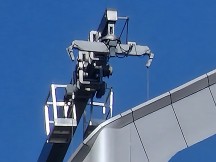
Daylight samples, telephoto camera: 10x • 30x • 100x
Low-light image quality
In low light the S22 Ultra applies its Night Solution automatically on the main camera, the ultrawide and the 3x telephoto, giving you almost Night mode level results without the need for switching modes.
The main camera captures impressive images at night with excellent detail - if still a bit noisy, but it's the good kind of noise. Highlights are nicely contained, shadows are well developed and colors haven't lost one bit of their pop.












Low-light samples, main camera (1x), auto Night mode
The full-on Night mode brings some changes, most notably intensified and warmed up street lighting, which we don't necessarily like better. Pixel peeping reveals heavier sharpening and reduced noise. The difference in dynamic range is minimal and most visible in the boosted shadows in particularly dark scenes.












Low-light samples, main camera (1x), Night mode
Most of the above applies to the ultrawide camera's results too. The Photo mode images are already plenty good enough with wide dynamic range and lively colors. There's a fair amount of noise, but also very good detail.












Low-light samples, ultrawide camera (0.6x), auto Night mode
Night mode makes a good thing better, cleans up the noise and brings out detail lost in the shadows in the previous shots. It's the shadows that get a real kick indeed and make the manual switch to Night mode well worth it for ultrawide shots.












Low-light samples, ultrawide camera (0.6x), Night mode
At 3x zoom the S22 Ultra isn't quite as dependable in full auto and even though it does produce decent images, there's is often a general softness to them.








Low-light samples, telephoto camera (3x), auto Night mode
Night mode sharpens things up significantly and gives shadows a much appreciated boost, making for overall superior photos. It also helps ensure that you'll be using the 3x module, since the might opt for the main camera in certain situations.








Low-light samples, telephoto camera (3x), Night mode
At 10x zoom, the Ultra may similarly decide to use digital zoom from the next in line camera, the 3x, but most of the time you do get the periscope's output. And most of the time photos will look okay, despite the prevailing softness and the occasional blotches of chroma noise.








Low-light samples, telephoto camera (10x), auto Night mode
Night mode is a real gamechanger here and there's really no aspect where it doesn't make a significant positive impact. We're talking improved sharpness, reduced noise, boosted shadows, the lot.








Low-light samples, telephoto camera (10x), Night mode
Once you're done with the real world samples, head over to our Photo compare tool to see how the Samsung Galaxy S22 Ultra stacks up against the competition.



Samsung Galaxy S22 Ultra against the iPhone 13 Pro Max and the Xiaomi Mi 11 Ultra in our Photo compare tool
Portrait mode
The S22 Ultra can shoot portraits with its main camera or the short telephoto. The pros and cons of each have been stated on these pages countless times, so another one wouldn't make a dent. The main camera will get get you better light gathering, hence improved results in adverse light conditions, but makes for an unflattering, overly wide perspective. The tele, in contrast, gets you a very portrait-friendly perspective, but will suffer in all but the best light.
On the S22 Ultra subject isolation is properly great regardless of focal length and, simulated as it may be, the blur has a very natural look at both zoom magnifications. As expected, the 1x mode shot on the main camera will get you the higher quality shots - sharper and with finer detail - even in broad daylight. But then head-and-shoulders type of framing with a 23mm equivalent lens will mean unnaturally large noses and possibly missing ears.
The telephoto addresses the perspective woes nicely, and it offers pretty decent per-pixel quality in good lighting. We'd say that during the day the 3x portraits are the better choice.
Low-light portraits on the S22 Ultra aren't half bad either, particularly when taken at 1x zoom and with Night mode kicking in. Subject isolation is great, dynamic range is superb and detail is... well, alright, given the circumstances. Things aren't quite so great with the Night mode off, with dynamic range taking a hit, noise being more prominent and detail lost in the darker areas.
At 3x zoom, the results are a lot more underwhelming, with the actual telephoto routinely failing to focus (with Night mode off), while the main-camera sourced Night mode shot is way too soft, even at fit to screen magnification.




Portrait mode samples, low light: 1x, Night Portrait • 1x, Night off • 3x, Night Portrait • 3x, Night off
Selfies
Selfies on the S22 Ultra are nothing short of superb. Dynamic range is nice and wide, colors are accurate and skin tones are on point. The 10MP resolution offers plenty of detail too, and even though there's some grain to be seen from up close, it's not a dealbreaker.
The 40MP mode can maybe give a few extra pores (or wrinkles, sigh) to stare at, but that's only in abundant light and at base ISO, with softness taking over above that.
Portrait mode does a remarkable job with subject isolation, though stray strands of hair against a contrasting background may still end up looking odd on occasion.
In low light, you'd be better off avoiding the 40MP mode as it will just give you more bad-looking pixels, plus it's pretty challenged in terms of dynamic range.
Photo mode will give you usable pictures, whether Night mode kicks in, or not. Even though they're quite soft, you can still make out your mug and exposure and dynamic range are pretty good under the circumstances.




Selfie samples, low light, Photo: w/o Night mode • w/o Night mode • w/ Night mode • w/ Night mode
Portrait mode shots are pretty much the same, but with a blurred background, and the dim conditions haven't introduced blunders in the subject detection.




Selfie samples, low light, Portrait: w/o Night mode • w/o Night mode • w/ Night mode • w/ Night mode
Forcing on Night mode will make a subtle difference in the tonal development in scenes where it otherwise wouldn't engage automatically. Generally, Night-mode enhanced shots will have stronger sharpening, less noise and less finer detail, whether you got there manually or with the auto kicking in.
Video recording
The Galaxy S22 Ultra records video up to 4K60 with all of its cameras - that's all five of them, yes. It can also capture 8K with its main camera, but only at 24fps, which is limitation that should have been lifted by now, we think - 30fps should be doable. Video stabilization is available in all these modes, but you can also turn it off if you have alternative means of supporting the phone.
8K capture is always encoded in h.265 HEVC while for the other modes you get to chose between h.264 or h.265. Regardless of video mode, audio is recorded in stereo and gets a 256kbps bit rate.
8K footage is best regarded as a check mark in the specsheet rather than a truly useful feature. Even though the clips (80Mbps) might reveal some extra detail given the right subject matter, they show a ton of artifacts, alongside a general softness. We'd steer clear.
4K is more our cup of tea and the Ultra delivers better quality there. 4K30 (48Mbps) from the main camera is nicely detailed, 'very good' we'd call it, because better ones exist. Dynamic range is excellent and color reproduction is accurate without being lifeless. 4K60 (70Mbps) is identical for the most part, except for a minor drop in fine detail.
The ultrawide camera is pretty good too producing detailed footage with wide dynamic range. Colors are ever so slightly warmer than on the main camera and skies are leaning a bit into cyan, but these are minor differences with little impact on overall impressions.
Save for its slightly too noticeable noise grain, the 3x telephoto capture is solid too. Footage is sharp and detailed, dynamic range is excellent and the colors are spot on.
The periscope tele isn't quite as happy having its clips examined at 1:1, but they still maintain what we'd call respectable quality. Given that proper 4K at 10x is virtually not available elsewhere, this one is as good as it gets anyway.
In low light, the main camera maintains its composure and records relatively good videos. Our very demanding balcony scene does reveal it doesn't quite have the widest dynamic range, with both clipped highlights and dark shadows being present, but in decently lit portions of the frame it captures very good detail, better than the S21 Ultra could. Colors are well preserved too.
The ultrawide doesn't take darkness quite as gracefully and this particular test scene ends up underexposed and soft. You'd need to pick better lit scenes for your ultrawide videos.
The teles are similarly struggling at night, though the 3x managed to capture what could pass for a usable clip.
Stabilization is very good on the S22 Ultra with its main and its ultrawide cameras. The phone can competently remove camera shake from walking or just handholding when pointing the camera in one direction. One issue we observed, however, is that when panning, the footage tends to overshoot the pan a little and then go back a few degrees. It's unusual and can be annoying. It feels like one of those things that will get fixed in a firmware update.
The 3x and 10x telephoto also deliver relatively stable footage, though some shake does still remain in the end result.
There are also a couple of Super steady modes. You get a choice of 30fps and 60fps but resolution is set at 1080p only. Two magnifications are available, 0.6x and 1x. but in either mode the phone uses the ultrawide camera and disables autofocus, which is a bummer.
Selfie videos offer very good quality, and with stabilization enabled they are very smooth as well. However, stabilization does eat into the field of view and fitting your entire head and leaving it some room to breathe requires quite a bit of a stretch. A selfie stick would help a lot and even a relatively short one will do.
Turning the stabilization off will improve things when it comes to coverage, but the resulting shakiness is too big of a trade-off. We'd go the stick route.
Here's a glimpse of how the Galaxy S22 Ultra compares to rivals in our Video compare tool. Head over there for the complete picture.



Samsung Galaxy S22 Ultra against the iPhone 13 Pro Max and the Xiaomi Mi 11 Ultra in our Video compare tool
Photo comparison
Ultras tend to be widely used in the office, but we did pry the S21 Ultra and the Note20 Ultra out of the hands of the guys daily-driving them and went for a little shootout.
Daylight
In broad daylight, the differences between the main cameras aren't huge, but they're there. Detail levels are comparable, but the Note is showing sings of age and its photos are generally softer than the other two. The S Ultras tend to be closer in detail and sharpness, but we'd say we're seeing a bit extra noise on the new model. Again, the Note has slightly different color rendition - warmer, more saturated hues than the Ss.









Main camera, 1x: S22 Ultra • S21 Ultra • Note20 Ultra
The ultrawides look even more similar between the three phones. Perhaps the Note and the S22 are now closer in their color science, the S21 marginally different, while detail levels are essentially the same. Again, the S22 is a tad noisier, particularly in the skies.









Ultrawide camera, 0.6x: S22 Ultra • S21 Ultra • Note20 Ultra
Comparing the teles isn't as straightforward because of the Note's 5x zoom camera next to the 3x+10x combo of the S series models. We compared 3x magnifications from the S21U and S22U against the Note20U's 5x and then the 10x from the S models against what are digitally zoomed 10x shots on the Note.
At 3x, the S22U is cleaner than the S21U for a change, while detail is essentially the same. The Note gives you a noticeably different image, with subjects much closer and better detailed. None of the three cameras is particularly contrasty on a pixel level, but they're super good enough.









Telephoto camera, 3x/5x: S22 Ultra (3x) • S21 Ultra (3x) • Note20 Ultra (5x)
You might think that the Note would be losing big-time at the 10x level, having to use digital zoom and all that, but it's not too far behind the other two. Only slightly softer at pixel level, the Note's photos look easily as good at fit to screen magnifications. Comparing the S models, the new one's shots are sharper and noisier - a common theme.




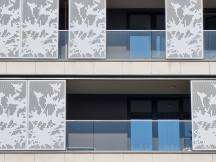
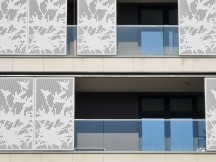



Telephoto camera, 10x: S22 Ultra • S21 Ultra • Note20 Ultra
Low light
In low light it is the S21 Ultra that is most often the noisiest, somewhat surprisingly, and it is more than once softer than the other two. The S22 Ultra's images are pretty grainy themselves, but are the most detailed. Mind you, these aren't overly pronounced differences and all phones will do a fine job at night.









Main camera, 1x, Photo mode: S22 Ultra • S21 Ultra • Note20 Ultra
With Night mode on, the hair-splitting continues, but newest remains the sharpest to our eyes and it has particularly well developed shadows. The Note becomes the softest here. It's interesting to point out the extra warmth and saturation in the S22U's rendition of street lights, to which the Note is close, but not quite there. The S21U is more neutral, more accurate.









Main camera, 1x, Night mode: S22 Ultra • S21 Ultra • Note20 Ultra
The ultrawides are all noisy in one way or another, each trying to strike its own balance between softness and noise. The Note leans to the latter, the S models are more into heavier noise suppression and thus slightly less detail. Still, the new S is sharper than the old S. Little separates the three in terms of dynamic range or color.









Ultrawide camera, 0.6x, Photo mode: S22 Ultra • S21 Ultra • Note20 Ultra
With Night mode on, global properties remain very similar, though a scene may show up that the S22 Ultra will warm up slightly more than the others. The Note tends to be the softest here (seeming a trend with its Night mode) while it's really a toss-up between the other two.









Ultrawide camera, 0.6x, Night mode: S22 Ultra • S21 Ultra • Note20 Ultra
At midrange zoom levels the S22 Ultra will most often be cleaner than its predecessor but not always as detailed. The Note is softer but it does provide a more zoomed in perspective.









Telephoto camera, 3x/5x, Photo mode: S22 Ultra (3x) • S21 Ultra (3x) • Note20 Ultra
Night mode makes the S22U's 3x images at least as good, but we'd say a little bit better than the S21U's. The Note is, again, not very competitive.









Telephoto camera, 3x/5x, Night mode: S22 Ultra (3x) • S21 Ultra (3x) • Note20 Ultra (5x)
While the Note held up nicely at 10x during the day, it falls apart in the dark and its images are very soft and lacking in detail. The other two may have their deficiencies, but are noticeably better than the Note, and roughly on par between them.









Telephoto camera, 10x, Photo mode: S22 Ultra • S21 Ultra • Note20 Ultra
Night mode doesn't do the Note much good, and it remains lagging far behind. The S22U and the S21U continue to be neck and neck, which is good news for the S22U since it manages to overcome the inherent disadvantage of its smaller sensor.









Telephoto camera, 10x, Night mode: S22 Ultra • S21 Ultra • Note20 Ultra
Video comparison
We kept things simpler for the video comparison and limited ourselves to just the Galaxy S22 Ultra and S21 Ultra - no Note20 Ultra in this one.
Daylight
Starting out with 8K at 24fps, let's once again say that we don't like either. We're seeing strong artifacting from both phones and whether it's due to noise, demosaicking, or compression, it's there and it's not looking nice. With that in mind, it's arguably the older phone has a slight edge in fine detail - there is just more definition in its tree branches and leaves.


Frame grabs, 8K: S22 Ultra • S21 Ultra
In 4K, on the other hand, we'd give the win to the S22 Ultra for detail and texture, though it could just be a slightly more liberal sharpening at play. It's also got the more accurate colors next to a warmer S21 Ultra. Dynamic range is on par between the two. It's a similar story looking at the ultrawides - marginally crispier S22U, warmer S21U.




Frame grabs, 4K: S22 Ultra (1x) • S21 Ultra (1x) • S22 Ultra (0.6x) • S21 Ultra (0.6x)
The S22U maintains a small edge in sharpness at 3x zoom, but oddly enough it's noisier in video than its predecessor, the opposite outcome to what we saw in stills. At 10x, the older phone produces cleaner and marginally better detailed footage.




Frame grabs, 4K: S22 Ultra (3x) • S21 Ultra (3x) • S22 Ultra (10x) • S21 Ultra (10x)
We'll have to reiterate that whatever differences we may be seeing between the two phones are minuscule and only observable in deliberate side-by-side comparisons. The real-world implications are essentially non-existent.
You can have a look at the videos in the playlists below, maybe play the respective clips simultaneously.
Low light
In low-light the S22 Ultra has a more tangible lead when looking at main camera 4K footage. It's notably less noisy and sharper in the well lit areas of the frame. We're also seeing somewhat of an advantage in dynamic range. The ultrawides are so mushy in these circumstances as to be irrelevant which one is more.




Frame grabs, 4K: S22 Ultra (1x) • S21 Ultra (1x) • S22 Ultra (0.6x) • S21 Ultra (0.6x)
In the battle of the teles, it's the older phone that has the upper hand. The difference is minimal at 3x, but becomes more pronounced at the longer zoom level.




Frame grabs, 4K: S22 Ultra (3x) • S21 Ultra (3x) • S22 Ultra (10x) • S21 Ultra (10x)
Competition
If you're eyeing up the Galaxy S22 Ultra, consider yourself lucky - obvious alternatives don't exist and if the latest ultimate Samsung does it for you, no other phone will. Because the S22 Ultra is both the Note that didn't happen last year, and the S Ultra that was always coming this Spring. As such, it is, indeed, everything to everyone - or, at least, most things to most people. But just telling you to pick up the Ultra without giving it much thought would be lazy reviewing and we only do that in the peak of summer, so let's see what your options are.

The last Note by name, the 20 Ultra (rumor has it that there was also a non-Ultra Note in 2020, but nobody has seen it), is dated. It has a two-year-old chipset inside, and even when it came out, it wasn't cutting-edge in terms of camera hardware. Sure, it does have what is essentially the same S Pen as this year's model, but we're not ones to condone buying a 2020 smartphone in 2022, flagship as it may have been at the time.
At 12-months-old, the S21 Ultra just barely passes the relevance test, so we might allow it. Its camera hardware may be superior in some obscure minor ways, but its output, in general, is not, so if the most capable Samsung cameraphone is needed, the S21 Ultra doesn't cut it. Plus, it's just a pretend-Note - it supports an S Pen, but has nowhere to store it, so what are the odds that you carry it on your person every time you need it.
You could say the same thing about the Galaxy Z Fold3 and its accessory S Pen. But if productivity is truly why the S22 Ultra is on top of your list, then maybe allowances could be made for the foldable that has 57% more screen area on just one of its screens (consider the other as a bonus), all the while being a mere 19% heavier. The Fold can't quite compete with the Ultra for camera prowess though, so it's looking like a classic case of 'win some, lose some'.

You'd be winning in image quality if you go for another Ultra, the Mi 11 Ultra, even if that one isn't exactly brand new either. Close to a year after its release, it remains our favorite cameraphone, and if that's higher on your list than a stylus, it may be well worth tracking a Mi down (they're not too widely available). There's also the Mi 12 bunch that should be arriving soon, but we don't know much about a possible next-gen Mi Ultra.
Last on this list is the iPhone 13 Pro Max, simply because the latest and best Galaxy is always going to be compared to the latest and best that Apple has put out. The Pro Max has neither the camera versatility, nor the stylus of the S22 Ultra, so that makes it somewhat of a tough sell if camera versatility and a stylus are what you're after the Galaxy for, but iPhones can tickle people in odd and not exactly quantifiable ways.
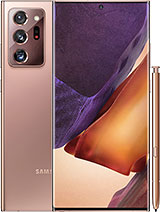
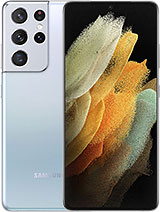
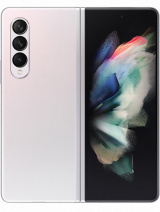
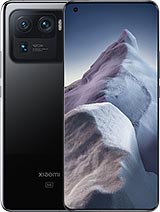

Galaxy Note20 Ultra 5G • Galaxy S21 Ultra 5G • Galaxy Z Fold3 5G • Mi 11 Ultra • iPhone 13 Pro Max
Verdict
The Galaxy S22 Ultra is in such a market segment that the concept of value doesn't necessarily apply to it and affect purchasing decisions. So the €1250/$1200 price is little more than just a number.

But the Ultra does, in fact, provide a lot of value. An upmarket phone with a stylus is essentially a Samsung-exclusive offering - competing efforts from Apple, Google, Xiaomi, Oppo, or Huawei simply do not exist. This is the latest and most powerful one and it can carry that S Pen inside it unlike the Fold or last year's Ultra, so it's unique even in Samsung's present realm too.
It's not as clear cut when it comes to the camera, where we could come up with potential alternatives - as good, or maybe a touch superior in this or that. But there's no denying that the S22 Ultra is a superbly capable all-rounded cameraphone, easily Samsung's best yet.
It's properly good when it comes to the fundamentals too, unsurprisingly. The brightest smartphone display we've seen excels in all other areas as well, battery life is about as solid as you can expect from a modern-day flagship, the software is refined and feature-rich, the design is understated, yet recognizable and stylish.
The Galaxy S22 Ultra may not have 'Note' in its name, but deep inside we know it is one, probably the last of its kind. From our Note-loving hearts and level reviewer heads alike, it's an easy recommendation.
Pros
- Traditional Note design with modern premium touches - big display, boxy shape, curved edges, unique camera styling.
- S Pen has wide-ranging functionality for work and play, is virtually without competition.
- Display is simply spectacular.
- Battery life is pretty great, all things considered.
- Ultra-grade camera system is one of the best on the market, zooming capability is hard to rival.
Cons
- S Pen eats up internal volume and adds weight, which isn't ideal if you're in for the S Ultra and not the Note Ultra.
- Poorly communicated fast charging capability (actually quite speedy in the Apple-Google-Samsung universe, but others are way faster).
- Isn't called a Note and that makes us sad.
from GSMArena.com - Latest articles https://ift.tt/f9EgXJT
via IFTTT
Bagikan Berita Ini



























































































0 Response to "Samsung Galaxy S22 Ultra review"
Post a Comment